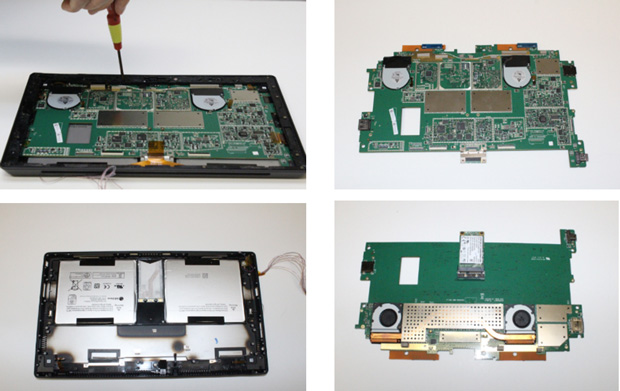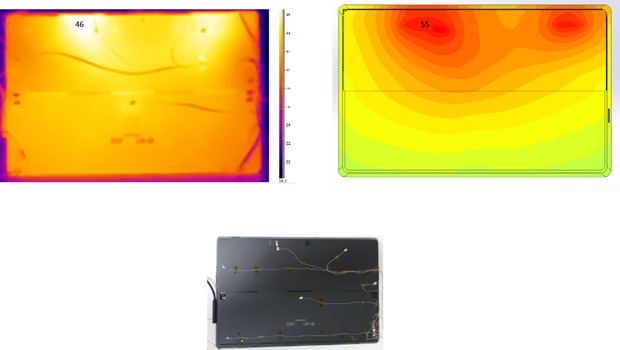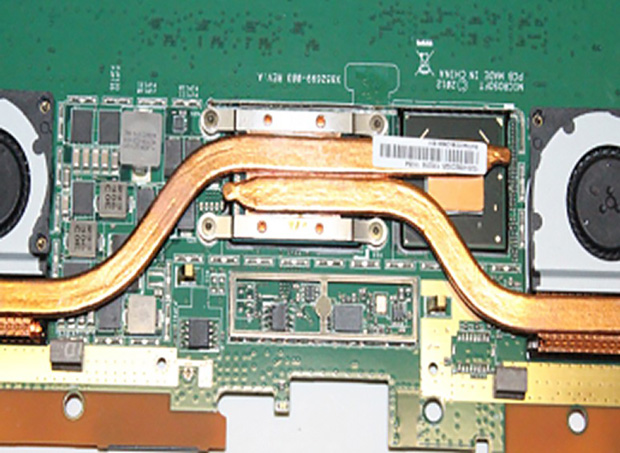
Figure 1: Understanding how a tablet works enables better system thermal design. Image courtesy of Mentor Graphics.
Latest News
July 12, 2016
By William Maltz, Electronic Cooling Solutions, and John Parry, Mentor Graphics
Accommodating higher performance computing in small form-factors such as a tablet is a thermal management challenge. Touch temperature is as important as processor temperature. Cooling by natural convection alone isn’t enough for the higher power density of a high-performance tablet, instead forced convection has to be used. This article examines the thermal management challenges of forced convection in a tablet form factor.
Electronic Cooling Solutions (ECS) first took apart tablets from different vendors, then focused on one particular tablet from a company in Cupertino, California. We did a thorough teardown and analysis of that particular device. We even depopulated the board to understand the amount of power that was used by the processor. We used the Mentor Graphics thermal transient tester, T3Ster, to get a better understanding of the thermal stack-up so that we could come up with an effective power number and an understanding of how it contributed to the thermal load in that particular tablet [1].
This initial study helped us to understand the limits of what you could do with given volumes in natural convection. It also increased our understanding of the effect of realistic spreading versus ideal spreading. We also learned more about the components that make up a tablet. A fundamental understanding of heat transfer is good, but it needs to be coupled with a good understanding of the actual products for which we’re designing cooling solutions.
Recently, we have been taking a look at another class of tablets, the business class of tablets that provide more performance than typical natural convection tablets [2]. This time we focused on a product from a company located in Redmond, Washington, because this tablet is a good example of a product that provides the type of performance that people expect to see in either a notebook or desktop system. We’ve used this product in our work to run CFD models. It can do them as long as the models aren’t too large or too complex, an indication of the processing power that these tablets can deliver.
Again, we took this tablet apart and dissected its innards to understand how it works (Fig. 1). To say that it relies on forced convection for cooling isn’t totally accurate. A mixture of forced convection and natural convection cooling is used to cool these devices. The need for improving heat spreading remains, whether we are looking at the design of a forced convection tablet or a natural convection tablet. We must also use the surface as effectively as possible is to avoid hot spots on the surface and to maintain a comfortable touch temperature.
 Figure 1: Understanding how a tablet works enables better system thermal design. Image courtesy of Mentor Graphics.
Figure 1: Understanding how a tablet works enables better system thermal design. Image courtesy of Mentor Graphics.With this product, we went through many of the same steps that we did with the natural convection devices. However, because of the mixed cooling nature of this product, we wanted to explore other techniques for enhancing the heat spreading, so we examined various materials, including copper (Fig. 2). We also considered graphite and another more recent innovation, thermal ground plane (TGP), that have some promise to provide some better heat spreading, but also currently have serious cost and development issues. We have had difficulty getting samples for our study, but we think these materials are going to be of interest to the industry going forward.
We estimate that with a forced convection product, power dissipation can be extended to about 40 Watts, whereas for a natural convection tablet, dissipating more than 17 Watts is difficult. So there’s a significantly larger capacity associated with the forced convection product. We ruled out from our earlier work the use of synthetic jets in forced convection systems. What’s being used mainly today are small blowers, not much different than what was done for notebook computing in the 1990s.
Even the all-in-one systems used a beefier version of that same kind of solution where the heat sources are essentially coupled to a heat pipe and heat spreaders, the heat is transported to a radiator, and then the air is pushed through the radiator with a blower, and exhausted out of the system. Two variations are being implemented, one where the blower is used to move a certain amount of air through the system to cool other components, and the other where the air actually is brought in very close to the intake side of the blower. It’s then just pushed through the heat exchanger and exhausted through a vent; it’s only being used to remove heat from the system that’s transferred by the heat pipes to the heat exchanger. Heat generated by lower powered devices is removed by natural convection.
Thus a mixed convection system is being used to cool the components that have to do with processing, graphics and Wi-Fi. This is typically where the power is concentrated. A heat-pipe solution is normally used for two to three chips in the product (Fig. 3). Eventually this may change to just one chip as all of those functions may be integrated into a single package. It’s just a matter of time because it will reduce cost, improve the performance and mitigate timing issues between these chips when they communicate with each other.
 Figure 3: Modeling the heatpipe (bottom); comparison of IR camera image (left) and simulation with the CFD software FloTHERM XT. Image courtesy of Mentor Graphics.
Figure 3: Modeling the heatpipe (bottom); comparison of IR camera image (left) and simulation with the CFD software FloTHERM XT. Image courtesy of Mentor Graphics.Current timing issues are exacerbated by chips running at different speeds, temperatures and more. At the end, there will be a reduction in total power, but also likely a higher power density if all these functions are inside one package. Cost and power reduction are mitigated by the power density, but in handheld devices, just as in every other consumer product in the electronics business, cost trumps thermal performance.
You certainly save cost on buying one package as opposed to buying three discrete ones and the cost of designing the extra electronics to get them to talk together properly, but there’s a hidden cost down the line — it can only be used if it can be cooled. In the long term, the industry will be able to increase performance by making more effective use of power management. The desire to have even more performance, which means increasing the power, has been present in every single other electronic product that was ever built.
Interestingly, power management is becoming such an important part of thermal management that we expect to see thermal organizations in the future having a group of software people that are involved in power management working within the thermal team in order to facilitate better communication between all of the people involved in managing the thermal solution. As the products become more integrated, the design teams have to also become more integrated. Certain companies that used to specialize in just software are now doing both software and hardware. They need to have good integration between the software and the hardware. Steps are being taken to ensure that software and hardware are optimized to work well with each other.
References
- Guy R. Wagner (2014), “A Study of the Maximum Theoretical Power Dissipation of Tablets under Natural Convection Conditions,” 20th THERMINIC Workshop, London.
- B. Nagendran, A. Raghupathy, and W. Maltz (2015), “Thermal Management Challenges in Forced Convection Tablets,” 31st SEMI-THERM Symposium.
William Maltz is president and founder of Electronic Cooling Solutions. John Parry is electronics industry manager at Mentor Graphics. Send email about this commentary to DE-Editorsmailto:[email protected].
Subscribe to our FREE magazine, FREE email newsletters or both!
Latest News







